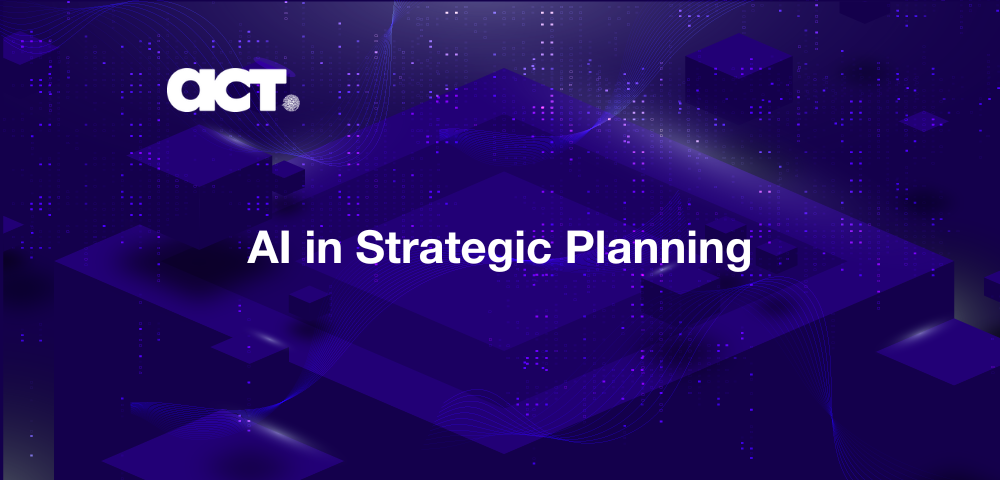No one argues anymore that digital transformation, or at least digitalization, is a strict imperative for business, but what lies beyond this reality? How should businesses navigate their digitalization journey, and what potential obstacles await them? These are the exact questions we address in this article.
Organizations that proactively adopt digital technology and weave it into their workflows and operations stand to gain significant benefits; These include increased efficiency and productivity, enhanced customer service, increased revenue and a stronger competitive edge.
However, the path to digital transformation is not always easy. Many organizations encounter substantial barriers that hinder the dynamic transformation process and often lead to its failure. However, it is encouraging to know that the challenges associated with digital transformation are often similar across industries, allowing organizations to leverage proven strategies to overcome them.
Common barriers to digital transformation and ways to overcome them
The challenges companies face during digital transformation are frequently quite similar and with the right strategies, they can be effectively managed. Fortunately, organizations can "learn from others' mistakes" and plan their own digital transformation journey more efficiently. Let’s explore some typical barriers (and solutions) that businesses encounter on their path to digital transformation. By proactively addressing these common challenges, businesses can build a strong foundation for successful digital transformation.
Lack of clear vision and strategy
Navigating your digital transformation journey without a clearly defined strategy is like walking blindfolded. At such times, businesses find themselves in uncertainty – what technologies should be implemented? How should these technologies be used? And in general, what are these technologies for? This ambiguity and lack of strategic priorities frequently become the primary reasons for failure.
Involving the organization's key stakeholders is crucial in developing a clear digital vision. This strategy should turn into an actionable roadmap, namely:
1. Assessing digital readiness. Analyze your organization's digital readiness to identify strengths and opportunities for improvement. This will help you see what your organization's digital landscape currently looks like and what steps you need to take to achieve your desired goals.
2. Joint workshops. Conduct workshops with key stakeholders from different departments (senior management, marketing, sales, IT, etc.) to generate ideas and define your organization's digital goals.
3. Mapping customer experience (CX). Analyze all key touchpoints in your customer experience to identify digital optimization opportunities that can improve the customer experience.
4. Define success metrics. Define key performance indicators (KPIs) aligned with digital goals that align with your digital vision to measure progress and track your transformation.
5. Develop a step-by-step roadmap. Break down your long-term vision into actionable steps, with clear deadlines and steps for each step. This incremental approach ensures flexibility and adaptability during digital transformation.
Resistance to change
Employees accustomed to traditional work styles may find themselves confused and frustrated when faced with new technologies and workflows. This conflict can lead to decreased productivity, which in turn affects the overall performance of the business.
Effective change management techniques are essential. Open communication and active communication of the main purpose of the transformation will help employees understand the need for the process and buy into the transformation. Remember that to create a culture of support for digitalization it is necessary:
1. Communication – clearly explain the purpose of digital transformation, clearly outline the benefits for both the organization and employees. Present this as an opportunity for professional growth and development.
2. Empathy. Focus on emotions and address employee frustrations during change. During change, it is important for people to understand that their feelings and emotions are taken into account, that each employee's point of view is valued, and that the transformation process serves everyone's interests.
3. Support. Involve employees in the decision-making process and encourage feedback. This creates a sense of belonging, motivates employees to participate and increases their contribution to the digitalization process.
4. Constant development. Create consistent training and education programs to keep employees up to date with new technologies. It is important to provide ongoing support and a mentoring system. This will help reduce resistance and develop a culture of learning and adaptation within the organization.
5. Celebrate achievements. Recognize and celebrate individual and team achievements (even small ones) throughout the process. Sharing success stories builds momentum and makes the value of transformation clearer.
Inadequate budget and resources
There are often cases when company management clearly states the desire for digital transformation and justifies its necessity, but often this business requirement is not accompanied by appropriate further steps. The process of digital transformation requires investment in technology, increasing the competence of employees and, possibly, the support of external expertise. Ensuring sufficient funding and efficient allocation of resources is often a challenge for many organizations.
Carefully evaluate budget constraints and prioritize areas that align with digital goals and support your business strategy. Properly assessing digital readiness will help define strategic priorities, providing a digital roadmap that must be supported by appropriate budget and resources. To better allocate resources during the digitization process:
1. Digitalization budget. It is necessary to plan the necessary funds to achieve your digital goals for the appropriate period of time, since innovation and digital transformation without financial costs are unfortunately unthinkable.
2. Cost optimization. Optimizing IT costs may include renegotiating software licenses with vendors, merging vendors, or canceling unnecessary subscriptions.
3. Cost-benefit analysis. Analyze the costs and expected benefits of digital initiatives to prioritize initiatives that deliver the most value.
4. Resource distribution. Plan allocation of budget, human capital, and technology resources based on team skills, workload, and upskilling potential of existing employees.
5. Budget flexibility - plan for unexpected expenses or opportunities. Regularly review your budget against your priorities.
Inadequate IT infrastructure
Legacy technology systems can create compatibility issues with new digital tools and limit the scalability and flexibility needed for transformation. At the same time, an inadequate IT infrastructure is a serious stress for the team of a company undergoing digitalization and contributes to people's frustration.
Modernizing legacy systems can be an important prerequisite for any digital initiative. Therefore, pay attention to the following aspects:
1. Legacy Infrastructure Assessment - Assess all current hardware, software and applications. Analyze their compatibility with digital goals. Identify critical systems for modernization and phase out non-critical systems.
2. Modernization roadmap. Develop a step-by-step plan that takes into account budget, environmental factors, obstacles, and operational implications.
3. Modernization options - explore replacing existing applications with cloud-based solutions through API integration or the use of virtual environments.
4. Implementation of the cloud. Evaluate migration of legacy systems to cloud systems for scalability, cost-effectiveness, and data archiving or system recovery.
5. Data migration. Develop a secure and efficient data transfer strategy that takes into account data cleansing, mapping, and downtime.
6. Support system – develop a systematic approach to solving employee problems and provide the necessary training module for working in a modernized environment.
Database silos and security issues
Data scattered across different systems can make it difficult to use them effectively. In practice, there are often cases when an organization does not have a unified approach to storing and processing data. We often come across examples where confidential information is stored only on the hard drives of the laptops of different colleagues. Moreover, ensuring data security in a digital environment is of paramount importance and is often one of the least considered aspects of transformation.
Consider the following steps to properly manage your data and reduce security risks:
1. Data comparison. Identify all data sources, formats, and locations to understand the company's current data practices and identify data silos.
2. Data management. Establish data access, access and use policies, and security protocols for responsible data management.
3. Data integration. Break down data silos for integrated solutions to facilitate the seamless flow of information exchange and processing and improve data-driven decision making.
4. Cybersecurity. Invest in robust security tools, conduct regular assessments, and increase employee awareness of data security best practices.
5. Continuous improvement. Continuously monitor, analyze and update management policies and security protocols to adapt to potential threats and regulations.
Lack of digital literacy skills at company level
In addition to the need for specialized technical knowledge, successful digital transformation requires a high level of digital literacy skills within a company's team. This means that employees at all levels—from senior management to front-line staff—must feel comfortable using digital tools and platforms. Lack of these fundamental digital skills can create significant barriers to adoption, potentially leading to failure.
To improve digital literacy skills at the organizational level, it is important to consider the following steps:
1. Analysis of digital skills. Assess digital literacy at the company level, identify areas for improvement and prioritize competency development.
2. Multi-level training system. It is important to develop training programs for people with different levels of digital skills, from basic computer knowledge to complex tools.
3. Microlearning and gamification. Use bite-sized modules and gamification to increase employee engagement, allowing you to develop interactive learning experiences and increase employee enthusiasm and motivation.
4. Mentoring programs. Encourage a culture of knowledge sharing and mentoring to promote collaboration and effective use of the company's team's core competencies.
5. Constant support. Create a digital knowledge base, transcribe the knowledge and skills of the company's team and make them accessible manuals and essential user manuals for digital platforms and systems, providing ongoing employee support at minimal cost.
The locomotive of success - The digital transformation team
It is clear that the most common barriers, to one degree or another, contain the problems that your company may face on the path to digitalization. But the most common and perhaps classic mistake is when a company’s team tries to implement digital transformation using only internal resources. The process of digital transformation is complex and requires a holistic approach across the entire organization. Therefore, a transformation team is needed, consisting of people with relevant expertise and cross-industry experience, who have an equal understanding of business goals and technological opportunities.
Remember that a seamless digital transformation requires a clear vision, effective communication and an understanding of responsibility for creating the capabilities your organization needs.
How prepared are you to take that initial step on the path to digital transformation?






